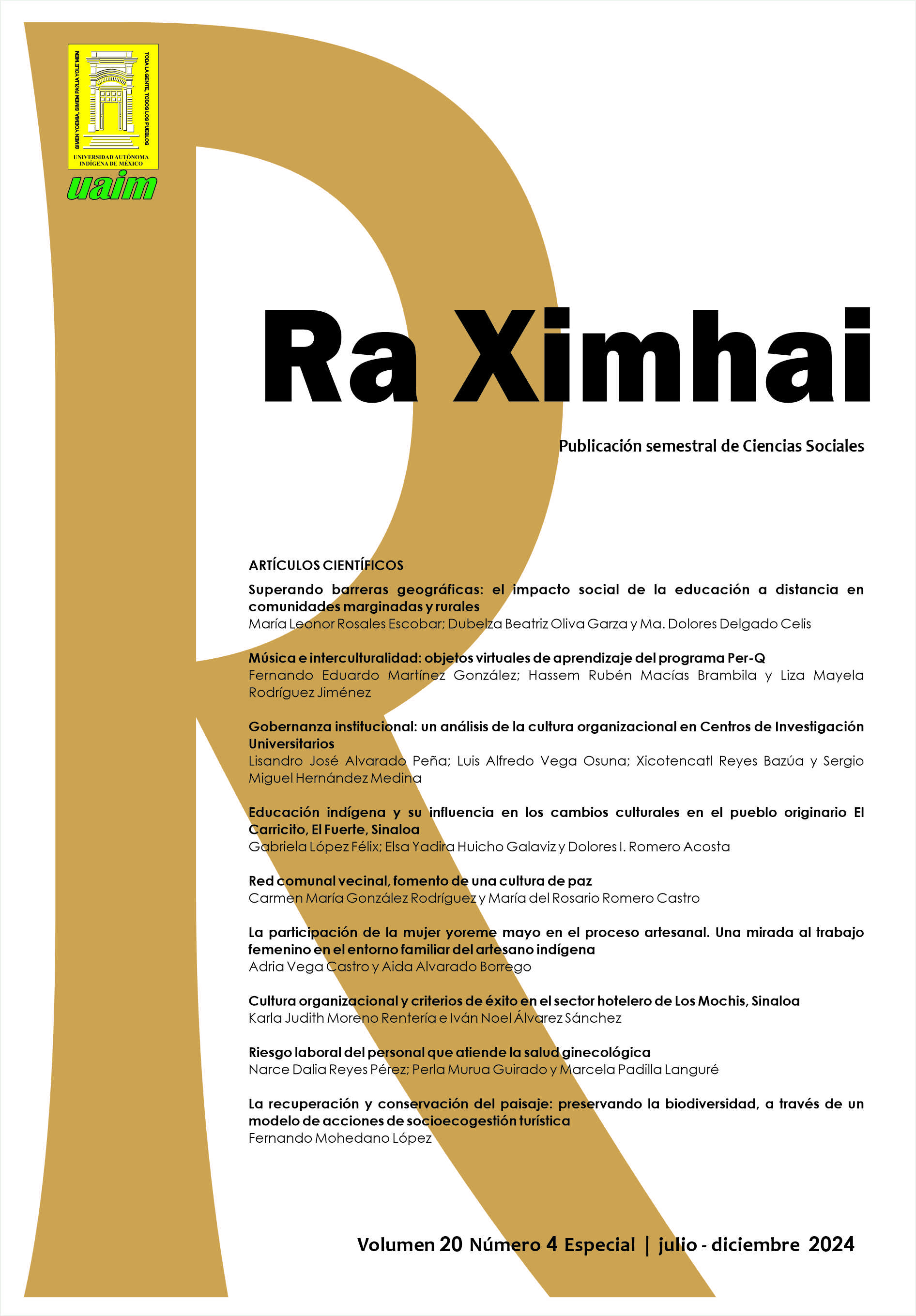Indigenous education and its influence on cultural changes in the indigenous people of El Carricito, El Fuerte, Sinaloa
DOI:
https://doi.org/10.35197/rx.20.04.2024.04.glKeywords:
native peoples, bilingualism, educationAbstract
This work aims to make visible the experiences of indigenous education and its influence on cultural change in the indigenous people of El Carricito, El Fuerte, located in the north of Sinaloa. Indigenous education in the community is offered in the initial, preschool and primary systems, despite this the community does not appear in the catalog of indigenous communities. In the school context, Spanish prevails as the language of communication between students and teachers, limiting the use of the native language to very specific activities within the classroom. Furthermore, even when the indigenous language subject is taught, there is no schedule available. specific to your teaching.
In the cultural aspect, we work with traditional dances that are presented at school festivals. More than 40 years after its incorporation into the indigenous education system in the community, we can say that the school is not immersed in community life, its culture, values, its worldview. In this context we can say that indigenous education in the community distances itself from what is postulated in the official discourse of bilingual education: offering education through the use of the native language of the people. These are some of the situations that will be addressed in this work.
Downloads
References
Baronnet, B. (2013). Lenguas y participación comunitaria en la educación indígena en México. AIBR. Revista de Antropología Iberoamericana, 8(2), 183-208.
Censo municipal El Fuerte, 2020.
Gasche, J. (2008). Educando en la diversidad cultural, Ediciones Abya yala, Ecuador.
INEGI. (2020). Censo de Población y Vivienda.
Juárez Sánchez, D. (2017). ¿Eucación intercultural bilingüe? Una experiencia en la comunidad zapoteca de San José Lachiguirí, Oaxaca. XIV Congreso Nacional de Investigación Educativa – COMIE, San Luis Potosí.
León Portilla, M. (2019). Las lenguas indígenas en el tercer milenio. Lenguas indígenas en México Vitalidad y resistencia. Revista de la universidad iberoamericana. XI (61). Abril-mayo, México.
King, L. y Schielmann, S. (2004). El reto de la educación indígena: experiencias y perspectivas. Organización de las Naciones Unidas para la Educación, la Ciencia y la Cultura.
Ramírez Castañeda, E. (2006). La educación indígena en México UNAM, México.
Romero Leyva, F. (2023). Educación intercultural y pueblos originarios. Coord. Romero Leyva F, Castro Estrada C., Sámano Rentería M. Sinaloa, México. ASTRA, UAIM. Primera edición. México.
Downloads
Published
How to Cite
Issue
Section
License

This work is licensed under a Creative Commons Attribution-NonCommercial 4.0 International License.
Usted es libre de:
- Compartir — copiar y redistribuir el material en cualquier medio o formato
- Adaptar — remezclar, transformar y construir a partir del material
- La licenciante no puede revocar estas libertades en tanto usted siga los términos de la licencia
Bajo los siguientes términos:
- Atribución — Usted debe dar crédito de manera adecuada , brindar un enlace a la licencia, e indicar si se han realizado cambios . Puede hacerlo en cualquier forma razonable, pero no de forma tal que sugiera que usted o su uso tienen el apoyo de la licenciante.
- NoComercial — Usted no puede hacer uso del material con propósitos comerciales .
- No hay restricciones adicionales — No puede aplicar términos legales ni medidas tecnológicas que restrinjan legalmente a otras a hacer cualquier uso permitido por la licencia.








